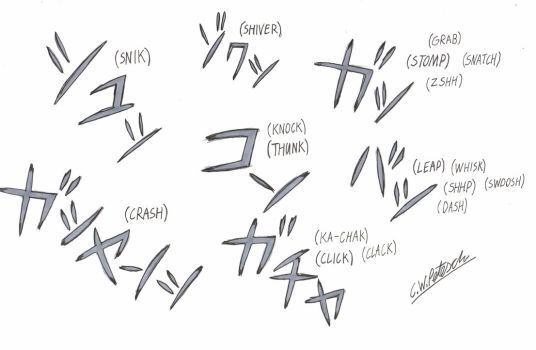
Angela Joseph
Jan 14, 2024
From Otaku to Fluent: Expert Tips for Learning Japanese through Manga!
Introduction: The Manga Language Odyssey
Do you love manga? Do you want to learn Japanese? If you answered yes to both questions, then you’re in luck. Manga is not only a great source of entertainment, but also a powerful tool for learning Japanese. In this blog post, we’ll show you how to use manga as a fun and effective way to master the language. Whether you’re a beginner or an advanced learner, you’ll find some useful tips and tricks to take your Japanese skills to the next level. Let’s get started!!
Why Manga?

Japanese comic books, known as manga, boast a rich history and cultural significance. Offering a diverse range of genres, from romance and comedy to fantasy and horror, It caters to a wide audience with varied tastes. Its appeal lies not only in captivating plots and memorable characters but also in the stunning artwork that brings these stories to life. Manga has the unique ability to transport readers to different worlds, eliciting laughter, tears, or thrilling suspense.
Beyond mere entertainment, it serves as a valuable resource for learning Japanese. Its pages can enhance vocabulary, grammar, reading comprehension, and listening skills as well as Japanese culture, including customs, traditions, slang, and humor. By delving into manga, readers gain insights into the everyday life, mindset, history, and values of the Japanese people.
Learning Japanese through manga is not just educational; it's also fun and engaging. Unlike traditional methods like textbooks or flashcards, manga keeps learners motivated and interested in the language. It transforms the learning process into a hobby, making it feel less like a chore. Manga becomes a delightful challenge, encouraging learners to grasp new words, and expressions, and understand the context and nuances of the language. This unique approach stimulates curiosity, and creativity, and inspires a deeper exploration of Japan and its rich cultural tapestry.
How to Learn Japanese through Manga

Learning Japanese through manga is not as simple as picking up a manga and reading it. You need to have some basic knowledge of the language, such as the alphabet, the grammar, and the pronunciation. You also need to have some strategies and methods to make the most of your manga reading experience. Here are some expert tips for learning Japanese through manga:
1. Choose the right manga for your level
One of the most important factors in learning Japanese through manga is choosing the right manga for your level. If you choose a manga that is too easy, you might get bored and lose interest. If you choose a manga that is too hard, you might get frustrated and overwhelmed. You want to choose a manga that is challenging, but not impossible. A manga that can help you learn new things, but also reinforce what you already know.
The best way to choose the right manga for your level is to browse through different manga and read a few pages. If you can understand most of the words and sentences, then the manga is suitable for you. If you can’t understand anything, then the manga is too hard for you. If you can understand some of the words and sentences, but not all, then the manga might be a good choice, as long as you’re willing to look up the unfamiliar words and grammar.
Some general guidelines for choosing the right manga for your level are:
1) If you’re a beginner, look for manga that have furigana, which are small hiragana or katakana characters that indicate the pronunciation of kanji, the complex Chinese characters that are used in Japanese. Furigana can help you read and learn kanji more easily. You can also look for manga that have simple vocabulary and grammar, and that use mostly hiragana and katakana, the two basic alphabets of Japanese. Some examples of manga suitable for beginners are Yotsuba&!, Chi’s Sweet Home, and Doraemon.
2) If you’re an intermediate learner, look for manga that have less furigana, or no furigana at all, and that use more kanji. You can also look for manga that have more advanced vocabulary and grammar, and that use more formal or polite language. Some examples of manga that are suitable for intermediate learners are Death Note, Haikyu!!, and Kimetsu no Yaiba.
3) If you’re an advanced learner, look for manga that have no furigana, and that use a lot of kanji. You can also look for manga that have very sophisticated vocabulary and grammar, and that use more colloquial or slang language. Some examples of manga that are suitable for advanced learners are Monster, Nana, and Bakuman.
2. Use a dictionary and a grammar guide
Even if you choose the right manga for your level, you will still encounter words and grammar that you don’t know or understand. That’s why you need to have a dictionary and a grammar guide handy when you read manga. A dictionary can help you look up the meaning and pronunciation of unfamiliar words, and a grammar guide can help you learn the rules and patterns of the language.
There are many online dictionaries and grammar guides that you can use for free, such as Jisho, Tangorin, Tae Kim’s Guide to Japanese Grammar, and Imabi. You can also use apps or extensions that can help you translate words or sentences on the spot, such as Google Translate, Yomiwa, or Rikaikun. However, you should be careful not to rely too much on these tools, as they might not always be accurate or natural. You should always try to figure out the meaning and usage of words and grammar by yourself first, and then use these tools to confirm or supplement your understanding.
3. Read actively and critically
Reading manga is not just a passive activity. You need to read actively and critically, paying attention to the details and nuances of the language. You need to analyze the words and grammar, and how they convey the meaning and tone of the dialogue. You need to compare and contrast the different styles and registers of the language, and how they reflect the personality and mood of the characters. You need to infer the context and culture behind the words and expressions, and how they relate to the plot and theme of the manga.
Reading actively and critically can help you deepen your comprehension and appreciation of the language and the manga. It can also help you improve your memory and retention of the words and grammar that you learn. To read actively and critically, you can use some of the following techniques:
Highlight or underline the words and grammar that you don’t know or understand, and look them up later.
Write down the words and grammar that you want to remember or review, and make flashcards or notes out of them.
Summarize or paraphrase the dialogue or the story in your own words, and check if you got the main points and details right.
Ask yourself questions about the dialogue or the story, and try to answer them using the information from the manga.
Discuss or share your thoughts and opinions about the manga with other learners or native speakers, and get feedback or corrections on your language use.
4. Complement manga with anime and other resources
Manga is a great tool for learning Japanese, but it’s not the only one. You can also complement manga with anime and other resources, such as books, podcasts, videos, games, and songs. These resources can help you enhance your listening, speaking, writing, and cultural skills, as well as your reading skills. They can also expose you to different varieties and aspects of the language, such as dialects, accents, idioms, and jokes. They can also provide you with more fun and diverse ways to learn and practice Japanese.
One of the best ways to complement manga with anime and other resources is to use the same or similar content. For example, you can read a manga and then watch its anime adaptation, or vice versa. You can also read a manga and then listen to a podcast or watch a video that talks about it. You can also read a manga and then play a game or sing a song that is based on it. By using the same or similar content, you can reinforce what you learned from the manga, and also discover new things that you might have missed or overlooked.
Conclusion
Learning Japanese through manga is a rewarding and enjoyable experience. Manga can help you improve your vocabulary, grammar, reading comprehension, and listening skills, as well as your cultural knowledge and awareness. Manga can also keep you motivated and interested in the language, and challenge you to learn new things. Manga can also inspire you to explore other aspects and forms of Japanese communication, such as anime, books, podcasts, videos, games, and songs.
If you want to learn Japanese through manga, you need to choose the right manga for your level, use a dictionary and a grammar guide, read actively and critically, and complement manga with anime and other resources. By following these expert tips, you can make the most of your manga reading experience, and achieve your language goals faster and easier.
So, what are you waiting for? Grab your favorite manga, and start your Manga Language Odyssey today!
To read more blogs from us, Click Here.